WinHEC 2005 - Keynote and Day 1
by Derek Wilson & Jarred Walton on April 26, 2005 4:00 AM EST- Posted in
- Trade Shows
Beyond XP-64
XP-64 wasn't the only major topic covered in the keynote. The other major topic was the next generation of Windows, codenamed Longhorn. There were several demonstrations of Longhorn features and capabilities, although there really wasn't a whole lot of new content shown. Gates also showed off several of the new tablet PC devices, but again, there wasn't anything really amazing to report. Here are a couple of gratuitous shots of these devices before we move on to Longhorn.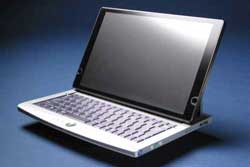 |
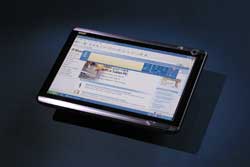 |
For those of you that know nothing about Longhorn, here are a few of the interesting tidbits. For starters, Longhorn will release simultaneously in 32-bit and 64-bit versions. In other words, 32-bit OS and system support will continue for quite a few more years, as Longhorn isn't scheduled to ship before the holiday 2006 time frame. Longhorn will also represent the most significant redesign of the Windows UI since the upgrade from Windows 3.1 to Windows 95 - or at least, that's what Microsoft is claiming.
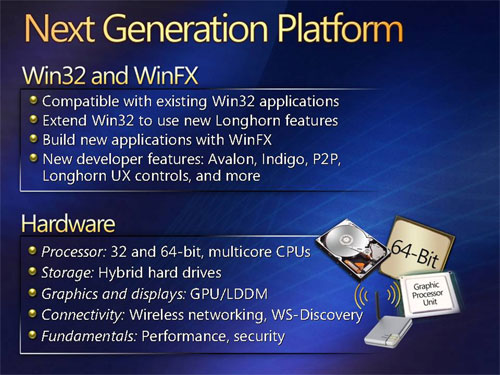
The above represents the broad plans for Longhorn in terms of features and hardware. WinFX is one of the core changes, and it relates to the way all of the GUI functions will be handled. 3D hardware acceleration with pixel shaders, alpha blending (transparency) and other graphical effects - a cynic might suggest that many look like stuff we've seen in OS X - are going to be a major part of the new OS.
One of the interesting points is that the graphics in Longhorn will be vector based, allowing for zooming effects without the pixelization that we get with the current model. This extends even further to areas like the new Metro document format. Metro is a royalty free standard based off of XML that Microsoft has created for Longhorn. The idea is that it will allow better translation of documents between various formats.
To illustrate this, MS gave a brief demonstration of a prototype printer with hardware support for the Metro format, with an example of a PowerPoint slide printed using the current driver model as well as the new Metro model. Frankly, we're not sure what the point was with the demonstration, other than to show that some programs don't print properly - PowerPoint apparently being a culprit. Anyway, Metro sounds like a new take on the PostScript concept, only without royalties. Royalty-free isn't a bad idea, certainly, but this feels quite a bit like the old browser wars. Take something another company makes for free and clone it, then integrate it into the Windows OS and give it away for free. Consumers might like it, but competitors don't all benefit from the decisions.
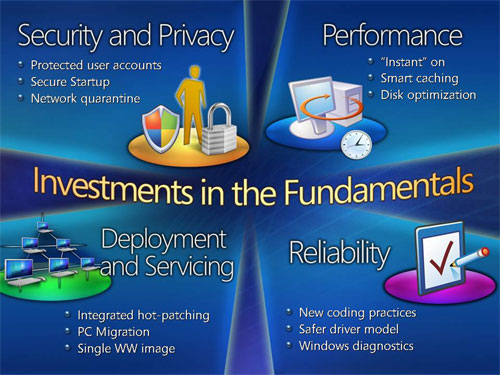
The purpose of Longhorn as a whole continues to be improving the computing experience, with security, performance, reliability, and service all playing a role. In order to realize this goal, changes are coming with Longhorn. One of the major changes will be the new driver model and certification program. We'll have more to say on that later.
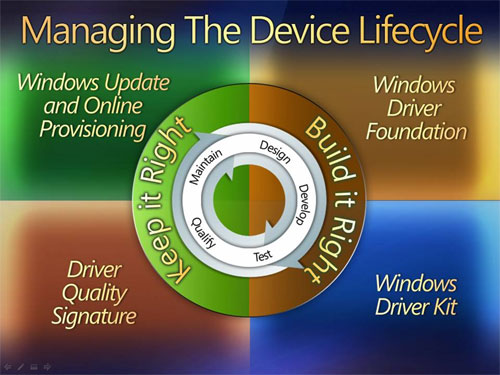
Windows Update will also be getting a renovation, with improved support. Gates suggested that in the future, users will all run WHQL certified drivers because there will be no need to use unsigned drivers. Hopefully, that will come by improving driver quality rather than by relaxing the requirements to gain certification.










36 Comments
View All Comments
nastyemu25 - Tuesday, April 26, 2005 - link
uh, "readily available"Viditor - Tuesday, April 26, 2005 - link
A quick note:"and with the largest readily available DIMMs currently coming in at 2 GB in size"
I believe that Samsung, AMD and MSoft were showing 4GB Registered Dimms at the show...
http://home.businesswire.com/portal/site/google/in...
Shinei - Tuesday, April 26, 2005 - link
What makes Microsoft think they know how to use video card memory better than the hardware creators and their respective driver teams? If their memory management in Windows XP is any indication, I imagine everyone will need 1536MB video cards just to play Half-Life 1... And no, that's not a typo.AtaStrumf - Tuesday, April 26, 2005 - link
he, he, HEC = JOKE in my languageThere's your explanation Kristopher ;-)
KristopherKubicki - Tuesday, April 26, 2005 - link
Who wrote those MS slides!Page 1 "An" Historical... ????
Page 6 "Compute" Cluster Edition....
Usually its bad to get the slides wrong on Day 1 of your own event!
Kristopher
Icehawk - Tuesday, April 26, 2005 - link
I'm up too early!